Denim Heads Are Obsessed With These $400 Jeans — But Are They Really Worth the Money?
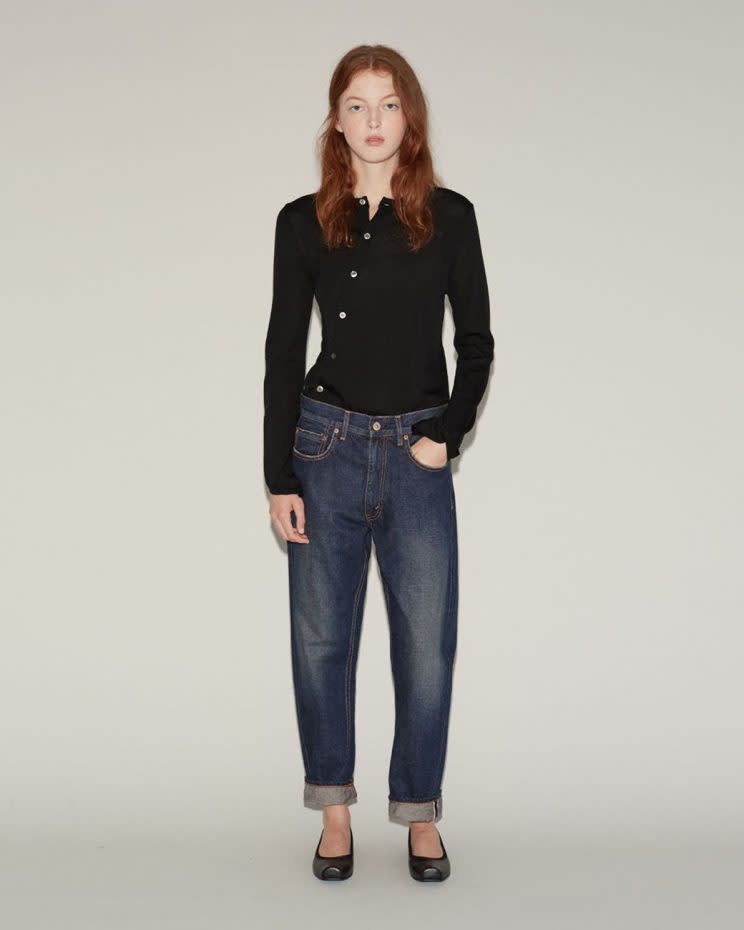
When Ben Epstein and Cam Calderon set out to create their own line of premium denim on HBO’s now-canceled show How to Make It in America, they, like the show itself, failed stunningly.
But one thing the show nailed in the first season was the cult following around a premium denim material known as “selvedge” (also called “selvage”). Ben and Cam stumble upon an abundance of the expensive Japanese fabric and attempt to create a collection of retro selvedge jeans, leading to what they think will be their big break in fashion.
If nothing more, the 2010 show was prescient. Denim is having a moment, as seen on everything from Marc Jacobs patchwork denim jackets to Kanye West’s Met Gala look. But within the depths of the denim universe exists a subset of selvedge fanatics, willing to spend hundreds on the covetable fabric. Celebs aren’t exempt: Justin Bieber favors a pair of Fear of God selvedge jeans that cost around $900.
In most cases, selvedge denim costs around $200, but can run into the thousands for luxury labels. What is it about selvedge denim that made the How to Make It characters and celebs willing to spend so much?
Selvedge is a material that is to denim enthusiasts what Air Jordans are to sneakerheads. It has a “sealed edge on both ends of the fabric” (the fabric name comes from “self” plus “edge”) and is woven on specific vintage looms that are hard to find and aren’t really for mass production.
You can spot selvedge denim most noticeably at the bottom of selvedge jeans, where the fabric is folded over to reveal the underside of the fabric and traditionally, a line of stitching (often, but not always, red) that indicates the end of the loom. It looks like this:
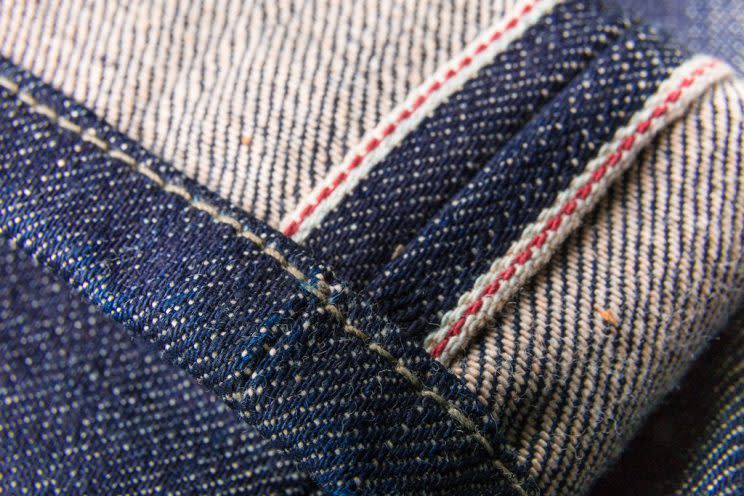
The fabric is popular in Japan, and typically where the highest quality denim is produced (at places like the Kurabo Mills, based in Osaka, for example). In the U.S., Cone Denim, based in North Carolina, is the only company that produces selvedge denim.
Buying a pair of good selvedge jeans isn’t cheap. Industry insiders say a premium pair runs between $200 and $300, the price dependent on a dozen different production factors.
The markup begins with the initial cost of selvedge denim, which is roughly 20 percent higher than regular denim, says Omid Davoodi, CEO of Pacific Blue Denim, an international denim supplier based in California. You also get about half as much selvedge denim per roll compared with regular denim, since selvedge rolls run about half the size of regular denim rolls. Plus, stitching selvedge is a careful process, Davoodi says, a real “kick in the head” that adds to the cost.
“Manufacturers charge more to cut selvedge denim because it’s a more precise process. You have to line up the edges perfectly, so there’s much less room for error.”
Read: Khloé Kardashian’s Good American Jeans Are the Biggest Denim Launch in Apparel History
In short: Selvedge denim is a more expensive fabric that is harder to come by and takes longer to create. Still, that doesn’t account for the price difference between a $475 pair of Pure Blue Japan jeans and your standard $150 pair of Levi’s. In addition to all of the modifications (buttons, zippers, stitching) that add to the cost, the scale of production affects how much you’ll spend.
That means companies that sell limited quantities of selvedge jeans have to make their clothes more expensive; meanwhile, international retailers like Levi’s are producing far more, meaning they can afford to price down.
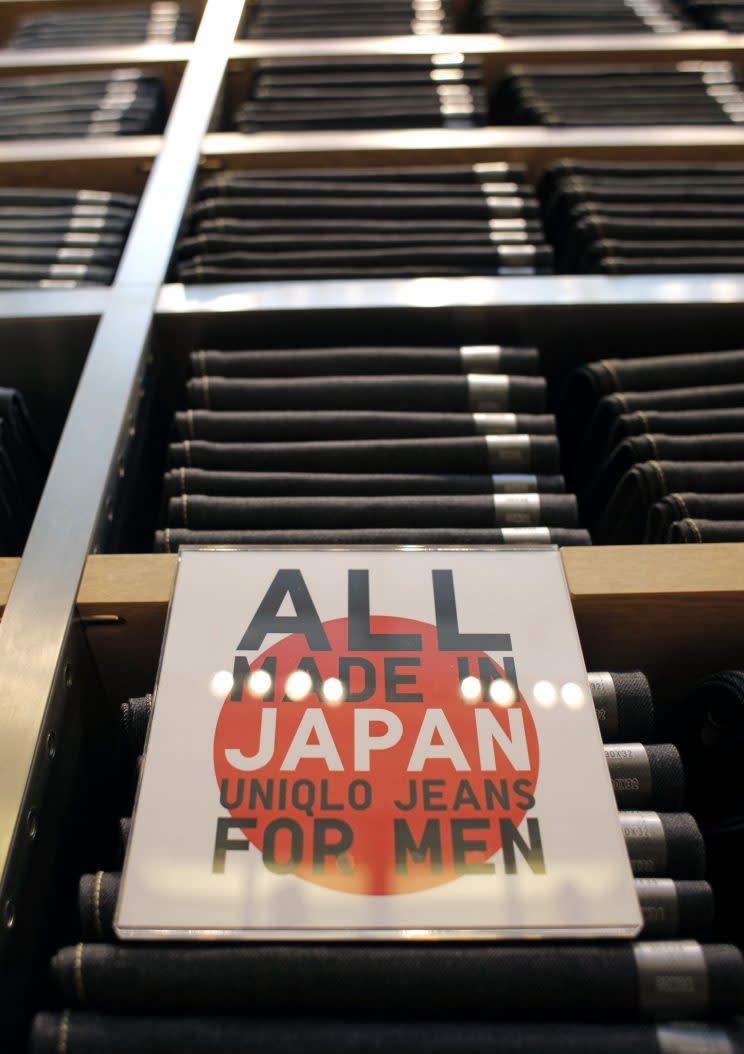
Japanese retailer Uniqlo sets the standard for low-priced selvedge denim, selling a pair of men’s regular fit jeans for $50 (often marked down multiples.) In addition to manufacturing in countries like China where labor is cheap, Uniqlo’s scale means it can purchase more denim from suppliers at lower, wholesale prices.
Selvedge denim has traditionally been more popular with men, though there are “unisex” styles, as well as women’s styles. Because selvedge denim uses the edge of the fabric, it’s more suited for a straight cut. Women’s jeans, comparatively, tend to be curved at the hip, says the founder of the Brooklyn Denim Co., Frank Pizzurro.
“It’s hard to make a selvedge denim jean for women because you’d have to use selvedge up at the top or adjust the pattern in some way, unless you’re going for a boyfriend fit.”
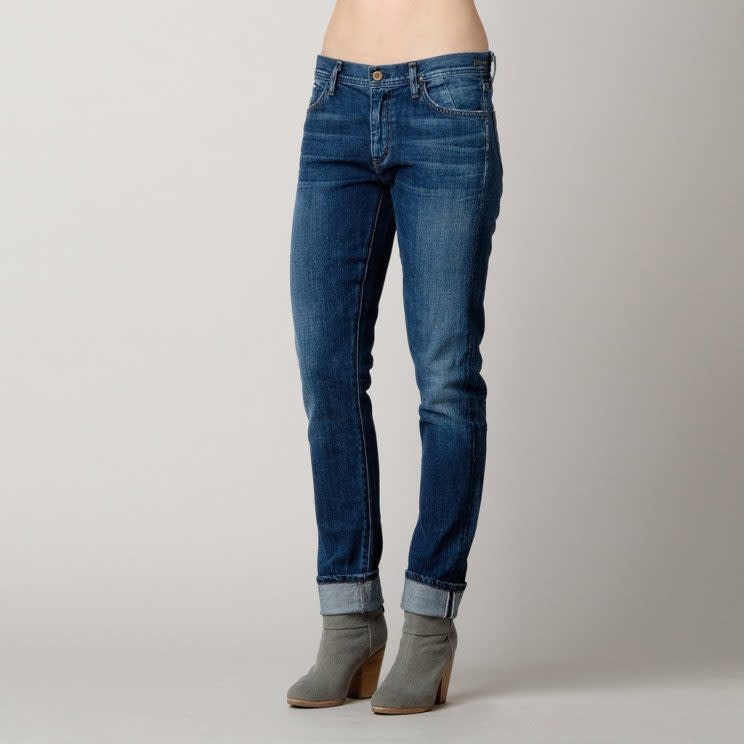
If you’re willing to make the investment in selvedge denim, you can find a good pair of jeans for roughly $200. Want to get a feel for selvedge without the buy-in? Opt for Uniqlo’s affordable version, but know you won’t be making any kind of statement in them (the brand’s jeans are notoriously bare-boned.)
A.P.C.’s most popular selvedge jean is the Petit New Standard fit, costing roughly $180. (For what it’s worth, A.P.C. says all of its denim is Japanese.)
Going for the Canadian tuxedo? NYC-based Jean Shop sells selvedge denim shirts for roughly $200.
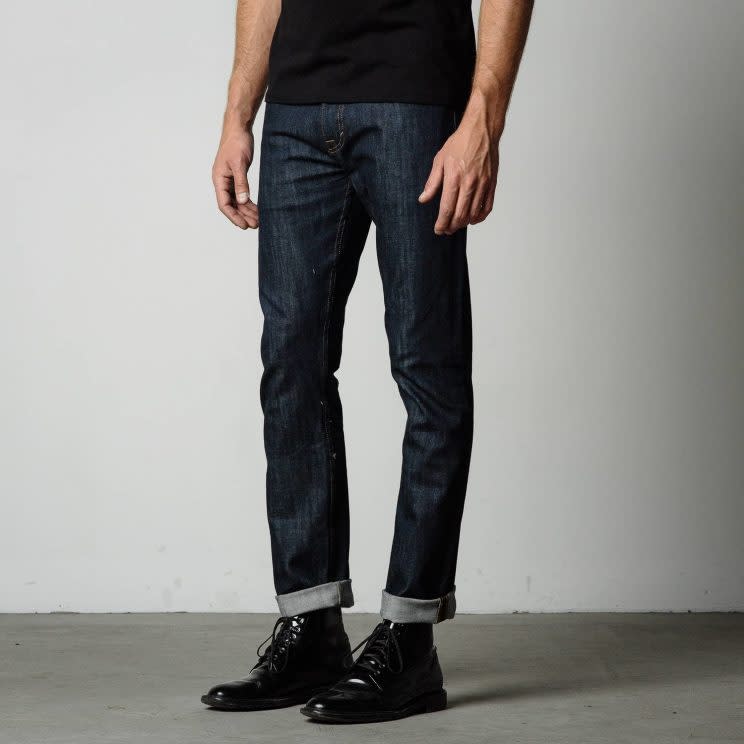
No matter where you decide to purchase your selvedge, keep an eye out for imitations. Before you buy, check a retailer’s website, which typically lists what fabric is used on a pair of jeans and whether they’re selvedge. If you’re in the store, examine the bottom of the jeans. Sometimes, red “webbing” is added, which gives the appearance of selvedge denim without the quality.
Alexandra Mondalek is a writer for Yahoo Style. Follow her on Twitter @amondalek.
Let’s keep in touch. Follow Yahoo Style on Instagram, Facebook, and Pinterest for inspiration delivered fresh to your feed, every day.

